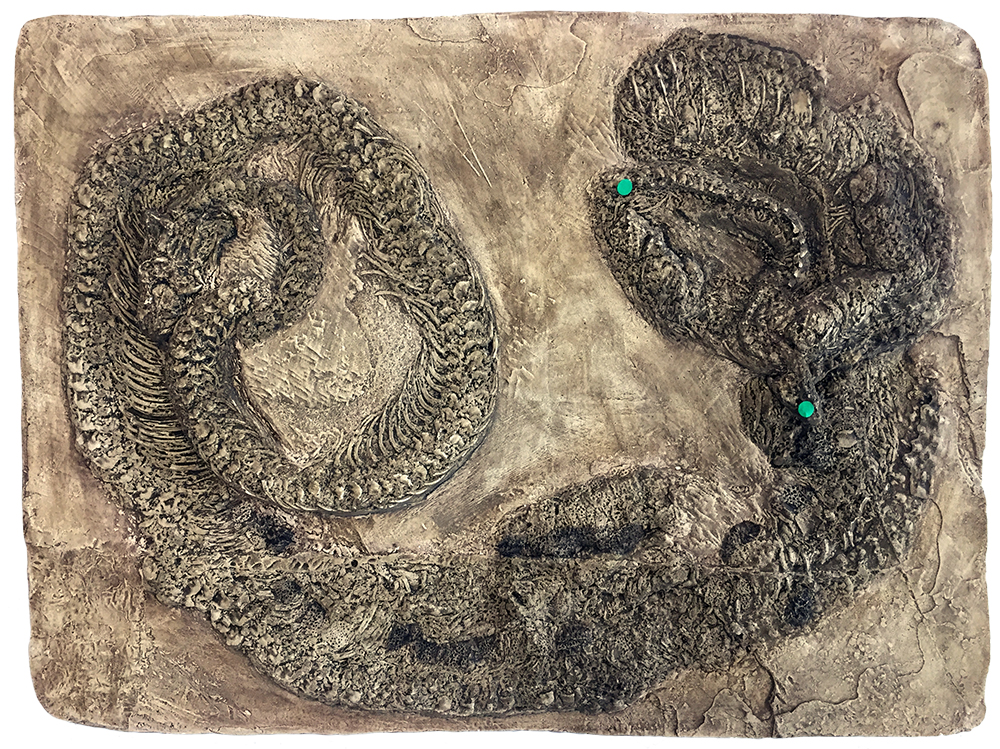
Originally called Palaeopython, this member of the boa snake family was found in Eocene deposits (56 to 34 MYA) in the Messel Pit of Germany, a former quarry for brown coal and bituminous shale. The snake was renamed Eoconstrictor in 2020. Like its modern relatives, Eoconstrictor killed its prey by constriction, resulting in asphyxiation, and then swallowed it whole, typically starting with the head.
Because of their delicate nature, snakes have a fairly poor fossil record but appear to be relative newcomers to our world. Snakes probably arose during the Early Cretaceous around 128 million years ago and appear to have evolved from burrowing lizard ancestors. Recent studies suggest that early snakes were primarily nocturnal, leaving the day to their lizard relatives. However, in the wake of the End-Cretaceous mass extinction, snakes underwent a remarkable evolutionary radiation, with one species, Titanoboa, reaching up to 14 meters in length and weighing up to 1,135 kg (2,500 lbs.).
During this radiation, most lines of snakes became daytime predators and lines repeatedly adopted aquatic habits as their long slender bodies are nearly as well adapted for swimming as moving on land or through trees. As a group, snakes further diversified as grasslands began to become widespread around 30 million years ago.
The most distinctive element of snake skeletal designs is their greatly elongated slender bodies and numerous vertebrae. While most mammals only have 26 or 27 non-tail vertebrae (humans with only 24 are something of an exception), snakes often have 200 to 400 or more vertebrae. Despite their long bodies, snakes have surprisingly short tails. The tail (marked by two dots) of this specimen was only a tenth of the snake’s total length.